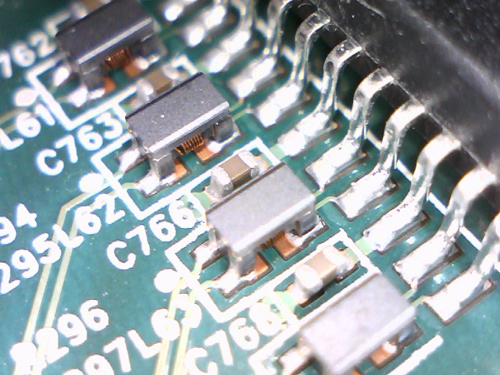By popular demand, the Ware for October 2010 is shown below:
You may already be familiar with the image. This was the circuit board attached to the bottom of a toner cartridge found in a “suspicious package” on a UPS plane earlier today. I’ve had several people write-in to request that I make this device the ware for the month to see what opinions readers have on the identity of the circuit board. The ten-second look at the board places it pretty solidly as a cell phone motherboard; there is a vibrator motor at the top left, customary RF lids to cover the radios, and a size and connector layout consistent with a low-end feature phone.
I’m guessing some reader can probably ID this down to the make and model from this picture alone…


